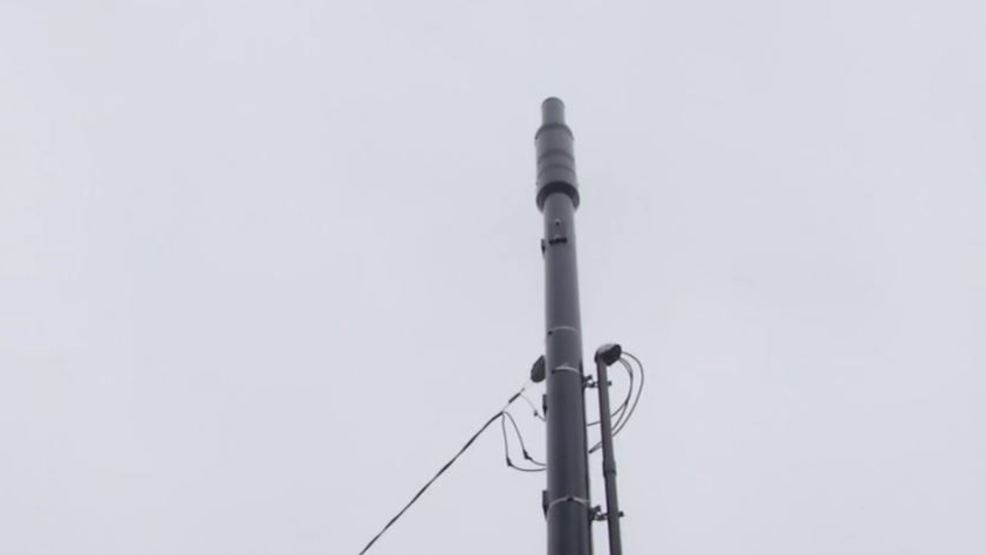Are usually safest distance coming from a 5G cell Structure?

If you've ever walked through a town and spotted tiny mini 5G cell towers placed on poles for street lighting. They look like little boxes however they're actually sending wireless signals from mobile providers to your phone.
The smaller ones are being replaced by the larger specially-designed cell towers. While they're less noticeable but they can still create problems for those who live nearby.
A FCC's Radiation Exposure Thresholds
The FCC's Radiation Exposure Thresholds establish the safe limit at which an individual can be exposed to electromagnetic energy generated by wireless devices. The exposure limits are based on research which show that the energy of RF could be harmful to human health.
The absorption rate specific (SAR) is a measure of the amount of radiofrequency energy that is absorbed by tissue. It is typically 1.6 milliwatts per kilogram spread over a kilogram of tissue.
However, because 5g transmits at higher frequencies, it has the potential to cause greater energy intensity on the skin and other directly-exposed body areas. This could lead to a wide range of potential harms, including exacerbated the development of skin conditions such as dermatitis, skin cancer and cataracts.
Due to the potential for negative effects of 5G radiation, PSU has chosen to set a general localized power density limit of 4 mW/cm2 measured over 1 cm2, but not to exceed 30 minutes, for the entire 5G spectrum at 3000 GHz. This localized limit is consistent with the peak SAR that is spatially averaged at 1.6 W/kg, averaged over one g of tissue at 6 GHz.
The FCC's Maximum Exposure Thresholds
Have you ever used a cell phone, you're probably aware that the safest range from the tower should be at least 400 meters. This is because the transmitting power of the cell tower is significantly increased the further your location from the tower.
Although this may sound like an ideal idea however, people living in close proximity to towers might be more prone to health problems. For instance, a study conducted in 2014 in India found that residents living within 50 meters from cell towers suffered much more health problems than those who lived farther away from the antennas.

But, the study found that people who moved into areas farther away from cell towers experienced their symptoms return to normal within a couple of days. Another study has demonstrated that exposure to extreme levels of radiofrequency electromagnetic fields (EMFs) can cause brain tumors, cancers and other health issues.
This is because the RF radiation utilized in wireless communications, can be absorbed by the body's outer layer, which is the skin. It is crucial to know because the skin acts as a barrier to protect against injuries caused by mechanical forces, infections from pathogenic microorganisms, as well as infiltration of toxic substances. The skin is the biggest organ in the human body, and is accountable for keeping the integrity of other organs.
The FCC's Minimum Exposure Thresholds for the Minimum Exposure
The FCC's Minimum Exposition Thresholds are based upon numerous assumptions that are not supported by evidence from science. what is a safe distance from a cell tower include the erroneous belief that short-term exposures RF radiations are not harmful due to the limited penetration into the body (i.e. the heating of tissues).
This also overlooks the more extensive penetration of ELF components of modulated RF signals as well as the effect of brief bursts of heat caused by RF pulses. These assumptions do not correspond with current understanding of the biological consequences of RF radiation. Therefore they shouldn't be considered for health protection exposure standards.
Furthermore to that, ICNIRP and FCC are limiting the maximum limits of exposure to peak local SARs based on the peak frequency of absorption (psSAR) which is not a sufficient dosimetric tool to assess the amount of exposure to radiofrequency radiation. Particularly the psSAR tool is not accurate when frequencies exceed 6 GHz. In what is a safe distance from a 5g cell tower , psSAR is not been tested for RF radiation with co-exposure to other environmental agents , such as sunlight. In what is a safe distance from a cell tower of interactions, RF radiation and other agents in the environment could produce synergistic or antagonistic impacts. This can lead to an increased risk of negative health effects. For example, exposure to RF radiation with sunlight may raise the chance of developing skin cancer, and may also exacerbate other skin disorders, such as acne.
